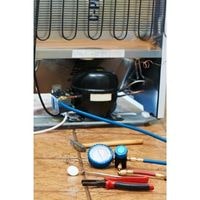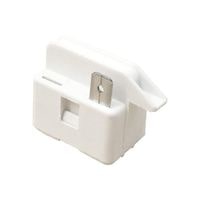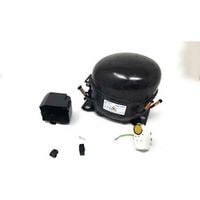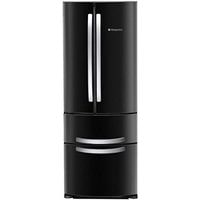Hotpoint Refrigerator Not Cooling. If your Hotpoint Refrigerator doesn’t seem to be cooling properly, make sure the condenser fan motor is not defective.
To do this, first, check for debris around the blades as this might cause it to stop working correctly. Next, try turning the blades with your hand.
If they aren’t turning or making any sound, it could be because of something preventing them from going around properly in their track.
Hotpoint Refrigerator Not Cooling

If your Hotpoint refrigerator isn’t cooling properly, it could be for a variety of reasons. If the fridge’s condenser coils are clogged with dust or leaves, it may not be able to cool properly. We suggest checking the condenser coils thoroughly and cleaning them if necessary.
The following are some problems with Hotpoint refrigerators that don’t cool.
Fan Motor For Condenser
When the refrigerator motor doesn’t work properly it keeps the food from being cooled. The first thing is to check the plastic pieces of the motor.
Plastic parts collect dust over time and that causes some problems in the refrigerator cooling system.
If there is no dust then we must open the refrigerator door and turn a part of a plastic fan by hand. If you cannot rotate a fan easily, we can speak about needing to change this part.
When you have checked all plastic components for dust, using a voltage meter we can test current coming from the mainboard to this plastic fan.
If nothing interrupts the current and it flows freely, then probably condenser motor must be replaced.
Starting Relay Issue

The start relay works in conjunction with the start winding to kick off the compressor.
If the start relay is defective, the compressor may sometimes fail to run or may not run at all.
As a result, the refrigerator will not be cold enough. To determine if the start relay is defective, use a multimeter to test it for continuity between the ‘’run’’ and ‘’start’’ terminal sockets.
If when testing them they do not have continuity between them then you can proceed straight on to replacing the faulty component itself.
Dirty Condenser Coils
Refrigerator condenser coils are used to dissipate heat. If they get dirty, the refrigerator will not be able to maintain a proper temperature.
Under normal circumstances, you can clean the condenser coils for your refrigerator by removing the kickplate at the bottom of the unit and wiping the coils with either a dry or slightly damp towel until they’re clean.
You should also make sure that there is no excess dirt or debris between where the coils connect to the rest of your refrigerator head or in other hard-to-reach places.
Control Board Issue
The main control board might be defective. This is almost never the cause, however. Before replacing the main control board, test all of the more commonly defective parts.
If none of the other components are defective and a new control board was added to fix another issue in addition to a new problem recently popping up, consider replacing it.
Faulty Compressor

The compressor is a pump that compresses the refrigerant and circulates it through the evaporator and condenser coils.
If the compressor is not working, the refrigerator won’t cool.
However, this is rarely the case. Before replacing the compressor, first, check all of the more commonly defective parts.
If you have determined that all of the other components are working properly, check to see if there is an open circuit between certain pins on the side of your compressor with a multimeter.
If there is an open circuit on those pins, then your compressor might be defective. You should consult with a licensed technician if this condition exists.
Defective Thermistor
Temperature readings are sent to the control board by the thermistor, which monitors the refrigerator temperature. Based on the temperature readings from the thermistor, the control board controls the compressor and evaporator fan.
If the thermistor is defective, power may not be reduced to keep your food from spoiling. As a result, there will be some warm spots in the food storage areas of your refrigerator.
To determine if the thermistor is defective, test it with a multimeter. The thermistor resistance should change in conjunction with changes in the refrigerator temperature. If there is no change or continuity, replace it with a new one.
Error Starting Capacitor
The start capacitor gets refrigerator motors primed for action by providing a brief burst of power during the start-up phase. If your refrigerator isn’t starting, it’s a good idea to check whether the start cap is broken.
To test the port, attach it to your multimeter and see if the part has power running through it during start-up. If it doesn’t, you know exactly what needs replacing, which is helpful.
Hotpoint Refrigerator Not Cooling
Related Guides
